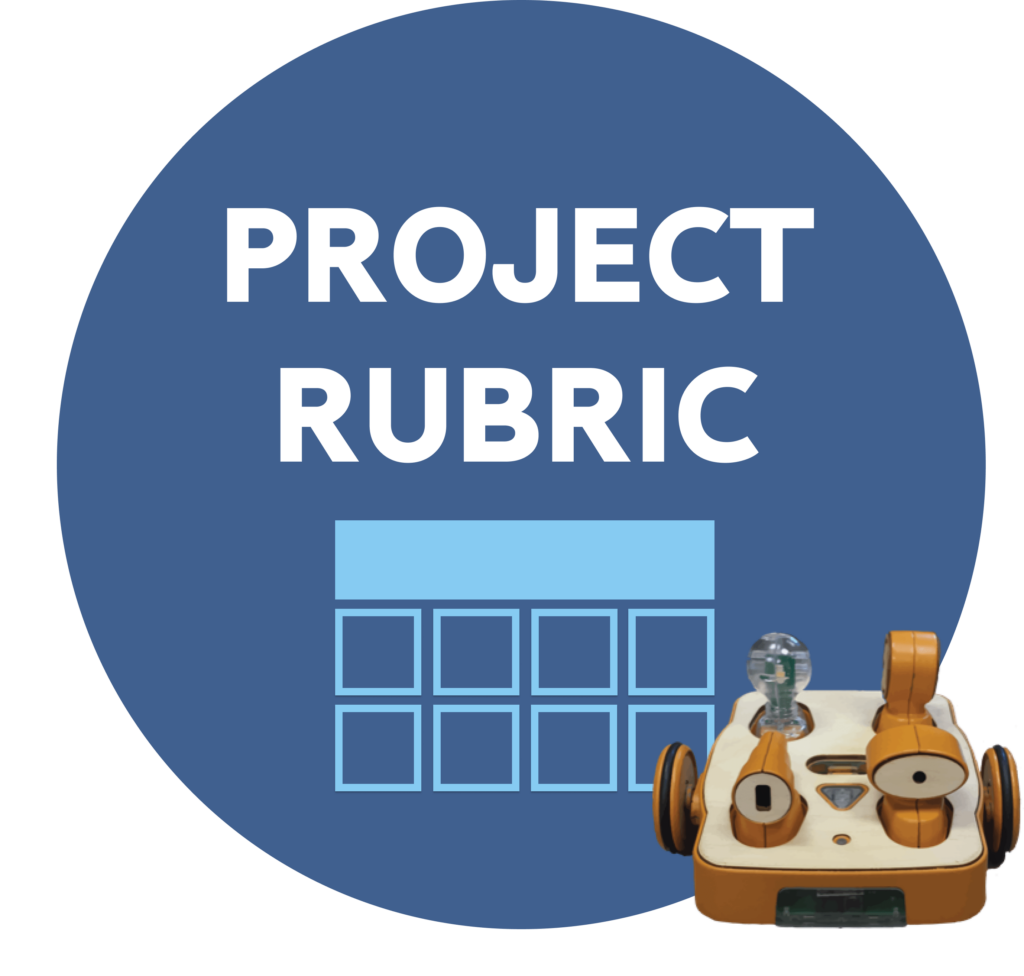
KIBO Project Rubric Overview
The KIBO Project Rubric is an assessment tool for researchers and practitioners to assess the level of complexity exhibited in a KIBO robotics project (Govind & Bers 2021, Unahalekhaka, & Govind, 2021). The rubric consists of two sets of criteria: (A) Programming Concepts and (B) Project Design Elements. Programming Concepts (A) refer to foundational skills and concepts that are specific to the activity of programming. The five sub-categories of Programming Concepts are (A1) syntactical accuracy, (A2) repeats, (A3) conditionals, (A4) module use, and (A5) data. Project Design Elements (B) refer to project characteristics that add aesthetic appeal, display originality and creativity, or extend the complexity of the project. The five sub-categories of Project Design Elements are (B1) sequencing, (B2) block variety, (B3) robot customization, (B4) setting, and (B5) coordination. Scores for the ten criteria are weighted and summed to obtain an overall level of project complexity: Budding, Developing, Proficient, Advanced, or Distinguished. The KIBO Project Rubric has undergone multiple phases of development and testing, demonstrating adequate validity and reliability for use in research and applied settings. To read more, please see our Publications page.
Sample Items
FAQs
Can I use this rubric with any KIBO robotics kit?
Yes, the rubric is independent of the type of KIBO robotics kit used to create projects. However, projects created with more complex kits that have additional modules and sensors may exhibit more complex programming concepts and project design elements, which may result in higher project scores.
Why are Programming Concepts weighted more heavily than Project Design Elements?
Although KIBO offers ample integration opportunities and has aesthetic appeal, its primary educational purpose is to introduce foundational programming concepts to young children. Thus, programming concepts are weighted more than project design elements.
How can I use this rubric in my teaching and learning setting?
The KIBO Project Rubric can be used to evaluate KIBO robotics projects created by adults or children. There are many ways to use this rubric, such as at the end of a professional development training to assess projects created by educators or at the end of a KIBO curriculum unit to assess children’s projects. It should be noted, however, that rubric scores reflect the overall project complexity, not the coding proficiency of the project creator.
Need help? Please email devtechresearch@bc.edu.
